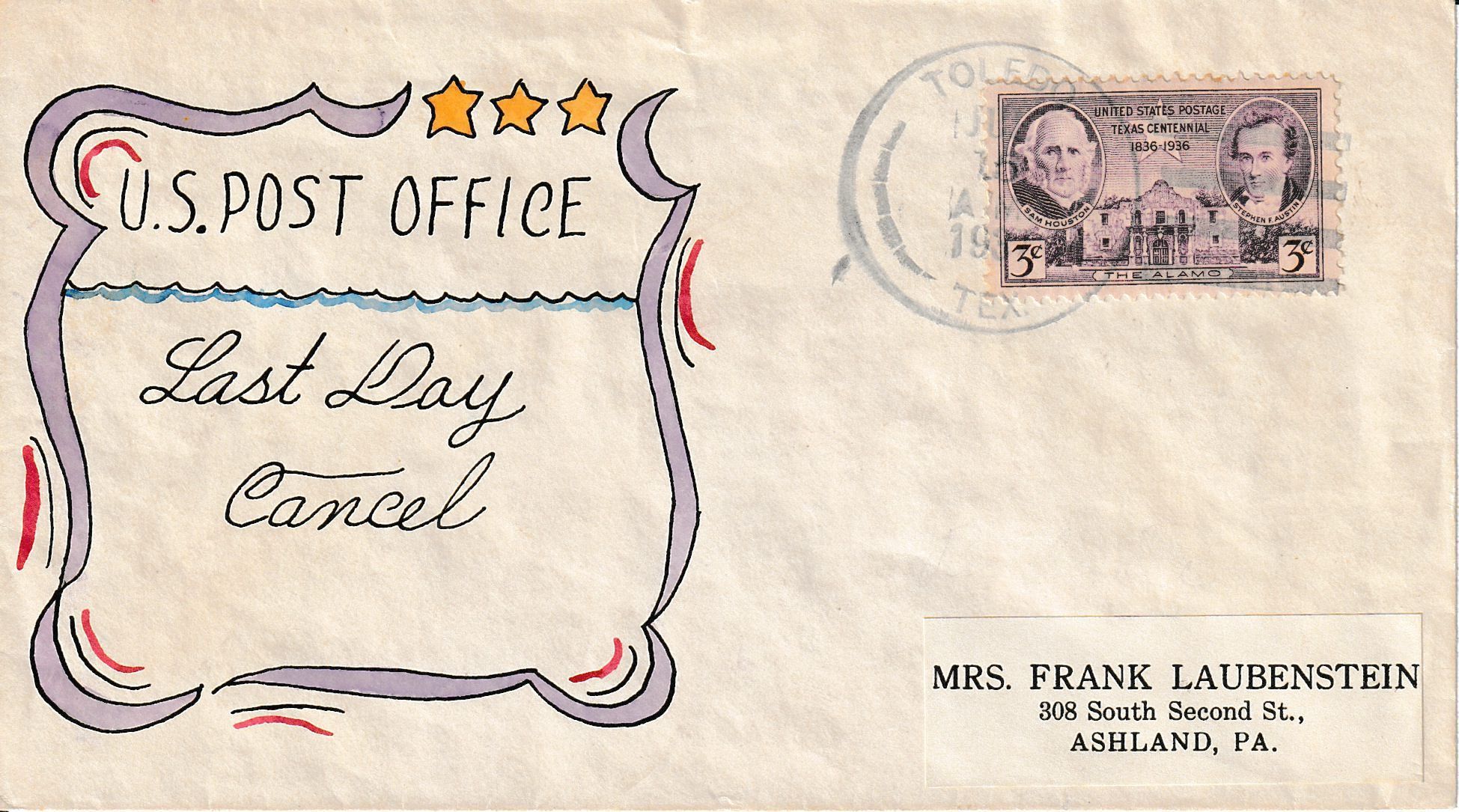Toledo Last Day [Cover]
Name/Title
Toledo "Last Day" [Cover]Description
A “Last Day” card postmarked on September 30, 1937, on the final day of business of the Toledo Post Office. Handdrawn cachet by Gladys Adler of Bellaire, Texas.Context
Toledo is on the Sabine River in northeastern Newton County. There are at least four versions of the origin of the name. One holds that early settlers from Ohio named the site after the city in the Buckeye State. Another relates that it was named for an Indian chief. A third claims it was for the Spanish city of Toledo, which is also on a river bend. Yet another version holds that the town was named for José Álvarez Toledo y Dubois, a leader in early nineteenth-century filibustering efforts against New Spain. Toledo was on the eastern edge of the old Bevil's Settlement and had a post office from 1873 to 1877 and again from 1885 to 1937. It served as a center for local agriculture, its location on the river allowing steamboats to carry goods such as cotton downstream. Nearby Hadden's Ferry, on the upper fork of the Old Beef Trail, also allowed cattle drovers to traverse the Toledo region on their way to market. The community is most famous for its pecans, first planted by Mrs. W. A. Steele in 1849. Some sixty years later the Sabine Valley Pecan Nursery began large operations in Toledo; the nursery eventually processed an average crop of 25,000 to 30,000 pounds annually and developed the Sabine and Odom varieties there. The company moved its main operations to Jasper in 1925, and the population of Toledo dwindled thereafter. However, construction of the Toledo Bend Dam and Reservoir in 1964 has given the area new potential as a site for recreational facilities.Category
Texas Folk Art: One-Hundred Fifty Years of the Southwestern Tradition, Discontinued Post Offices (DPOs)
Urbanization, TSHA Categories

